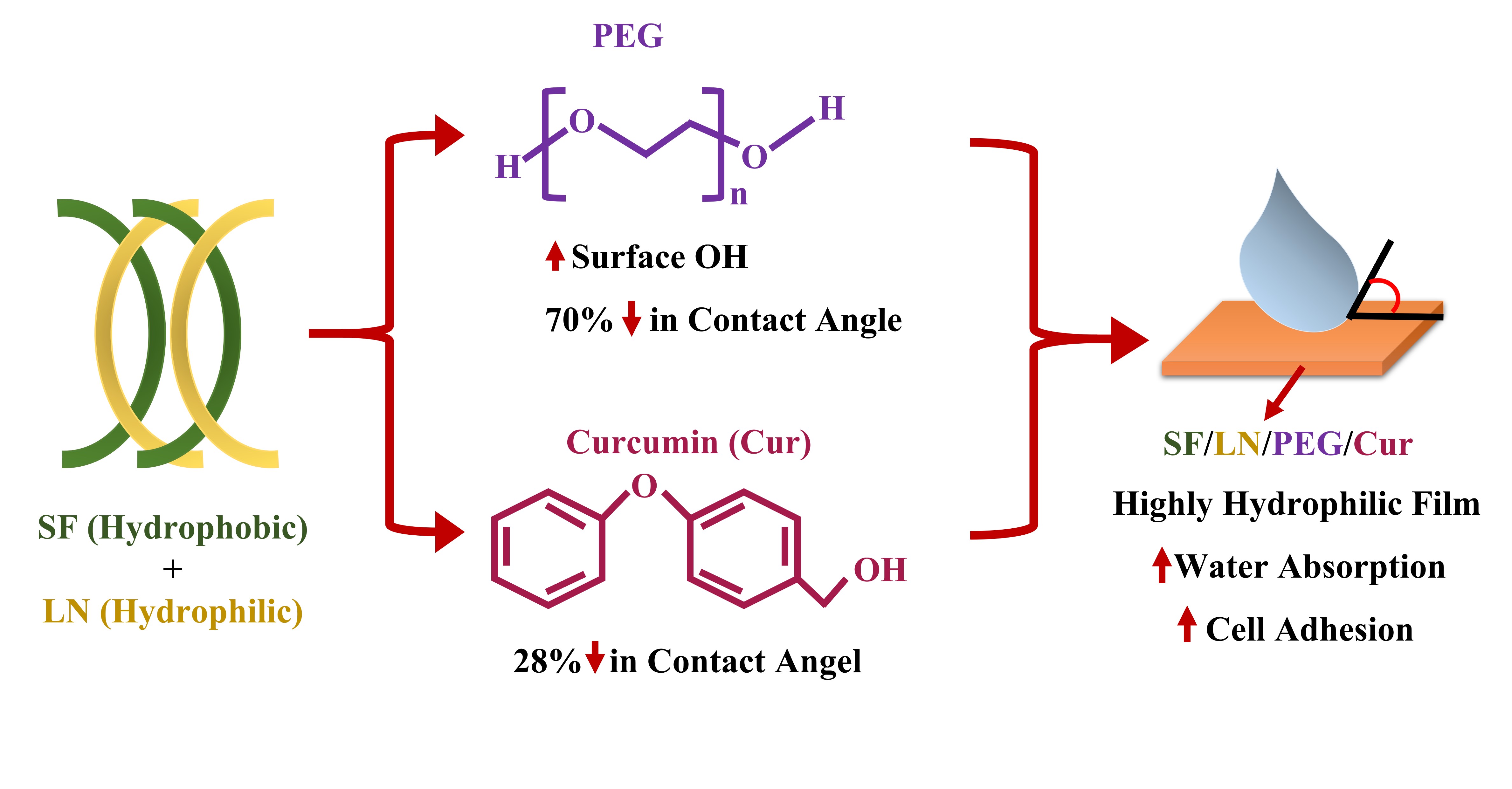Tue, Oct 7, 2025
[Archive]
Volume 22, Issue 3 (September 2025)
IJMSE 2025, 22(3): 114-124 |
Back to browse issues page
Download citation:
BibTeX | RIS | EndNote | Medlars | ProCite | Reference Manager | RefWorks
Send citation to:



BibTeX | RIS | EndNote | Medlars | ProCite | Reference Manager | RefWorks
Send citation to:
Rafati F, Johari N. Synergistic Enhancement of Hydrophilicity in Silk Fibroin/Linen Blends via Polyethylene Glycol and Curcumin for Advanced Wound Healing. IJMSE 2025; 22 (3) :114-124
URL: http://ijmse.iust.ac.ir/article-1-4116-en.html
URL: http://ijmse.iust.ac.ir/article-1-4116-en.html
Abstract: (1163 Views)
It must be recognized that the degree of this factor will influence how well wound-healing materials perform water absorption, protein interaction, and cellular adhesion. In the present study, we are concerned with studying the effects of polyethylene glycol (PEG) and curcumin (Cur) on the hydrophilicity of silk fibroin (SF)/linen (LN) composite films. The SF and LN composite films were blended at an equal mass ratio of 1:1, and PEG and Cur were also added to induce changes in surface properties. Fourier-transform infrared analyses showed that intermolecular interactions and hydrogen bonding were formed among the components in the blends. There was a very obvious hydrophobicity reduction by the addition of Cur and PEG/Cur, as exemplified by the static water contact angle measurements: simply addition of Cur to SF lowered the contact angle from approximately 100° to 72°, whereas a co-addition of PEG and Cur produced the greatest reduction (64°), equalling 70%. The synergistic effect in the surface wettability enhancement occurs because both additives introduce polar moieties onto the surface and partially disrupt the SF crystalline structure. Water uptake and cell viability tests further verified the hydrophilicity and biocompatibility of PEG/Cur-modified SF/LN films. This promotes the use of PEG/Cur-modified SF/LN blends as hydrophilic, bioactive materials suited for advanced wound dressing and tissue engineering scaffolds.
Type of Study: Research Paper |
Subject:
Biomaterials
Send email to the article author
| Rights and permissions | |
 |
This work is licensed under a Creative Commons Attribution-NonCommercial 4.0 International License. |








